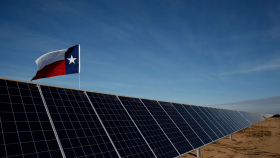Solar Impulse 2 took us on an around the world solar flight. Now, SolarStratos is taking humans to the edge of the space with the power of the sun.
There is a flurry of activity in the field of solar-powered aeronautics since the success of Solar Impulse 2. “In nine years and eight months, you’ll have 50 people traveling short-haul on electric planes,” co-founder Bertrand Piccard recently told members of the International Air Transport Association (IATA) airlines association. “Why nine years and eight months? Because since four months I’ve been saying it will be ten years. It will happen.” Hot on the heels of Piccard and his co-pilot André Borschberg is Raphael Domjan and the SolarStratos team.
“Our goal is to demonstrate that current technology offers us the possibility to achieve above and beyond what fossil fuels offer. Electric and solar vehicles are amongst the major challenges of the 21st century. Our aircraft can fly at an altitude of 25,000 metres and this opens the door to the possibility of electric and solar commercial aviation, close to space,” said Raphael Domjan, is the the initiator and pilot of the SolarStratos project, unveiled last week.
The ambitious project is looking to make clean solar and electric aviation possible for the equivalent environmental footprint of an electric car. In the past, reaching the stratosphere has required massive rockets or large helium balloons.
SolarStratos Specs:
SolarStratos is an 8.5-meter-long space plane has a wingspan of 24.8 meters, weighs 450 kilos and is covered with 22 square meters of solar panels of solar panels, according to the project’s website. If all goes as planned, Solarstratos will be the first manned solar-powered aeroplane to penetrate the stratosphere. Unlike the Solar Impulse 2 aircraft, this SolarStratos is a tandem two-seater, but similarly to Solar Impulse it will have an unpressurized cabin to keep the weight down. This means Domjan and his co-pilot will have to wear pressurized space suits when they embarks on mission. The spacesuits are also powered by solar energy, which will mark another major innovation and world first. The flight will entail a two hour ascent into space, 15 minutes beyond the stratosphere, and a three hour descent. SolarStratos is scheduled to begin test flights next February, while medium altitude flights are planned for next summer, and the first stratospheric flights should take place in 2018.
“We are extremely pleased with the positive feedback and encouragement that we have received,” said Roland Loos, CEO of SolarXplorers S.A., the organisation in charge of the development of the SolarStratos project. “Our project… opens the door to new scientific knowledge – at an affordable price, exploration and the peaceful use of our stratosphere.”
SolarStratos has assembled an impressive team, including:
Raphael Domjan: The 43 year old pilot is not a novice in the solar transportation game. Domjan was the creator of MS Tûranor PlanetSolar, the first solar-powered boat to circumnavigate the globe in 2012. PlanetSolar is the world’s largest solar boat.
Roland Loos: Loos, in addition to his role as CEO of SolarXplorers S.A., comes from the telecommunications field, and his company, ITC provided the satellite communications for the Solar Impulse 2.
Calin Gologan: Gologan is the creator and designer of the aircraft which will be used for the SolarStratos Mission. An aeronautical engineer with over 35 years of experience, Gologan is the founder and CEO of PC-Aéro GmbH, a company that works on the scope, conception aircraft, certifications and creation of prototypes. Gologan has collaborated with Solar Impulse and calculated static loads for gliders (wings, fuselage, tail, landing gear).
Michael Lopez-Alegria: A four-time space shuttle pilot and former commander of the International Space Station, Lopez-Alegria Alegria is also a member of the Administration Council of the Association of Space Explorers and a member of the Experimental Test Pilot’s Society and of the Aero-Naval Association.
Sponsors of the project include Ciel électricité, a major French electrical equipment company and Zvezda, a Russian manufacturer of pilot life support systems along with the Swiss Cantons of Vaud and Neuchâtel, famous for long traditions of watchmaking and microtechnology. Other sponsors include several Swiss research companies and solar suppliers.
SolarXplorers S.A. tells Inverse it expects to launch its first flights for commercial passengers in two to three years, but at a pretty steep price; each mission will cost $10 million.
Typically, commercial planes tend to fly in the lower region of the stratosphere, staying at altitudes between 6 and 12 miles. The SolarStratos plane reaches an altitude of 15 miles above Earth. As a comparison, the International Space Station is 220 miles above Earth.






